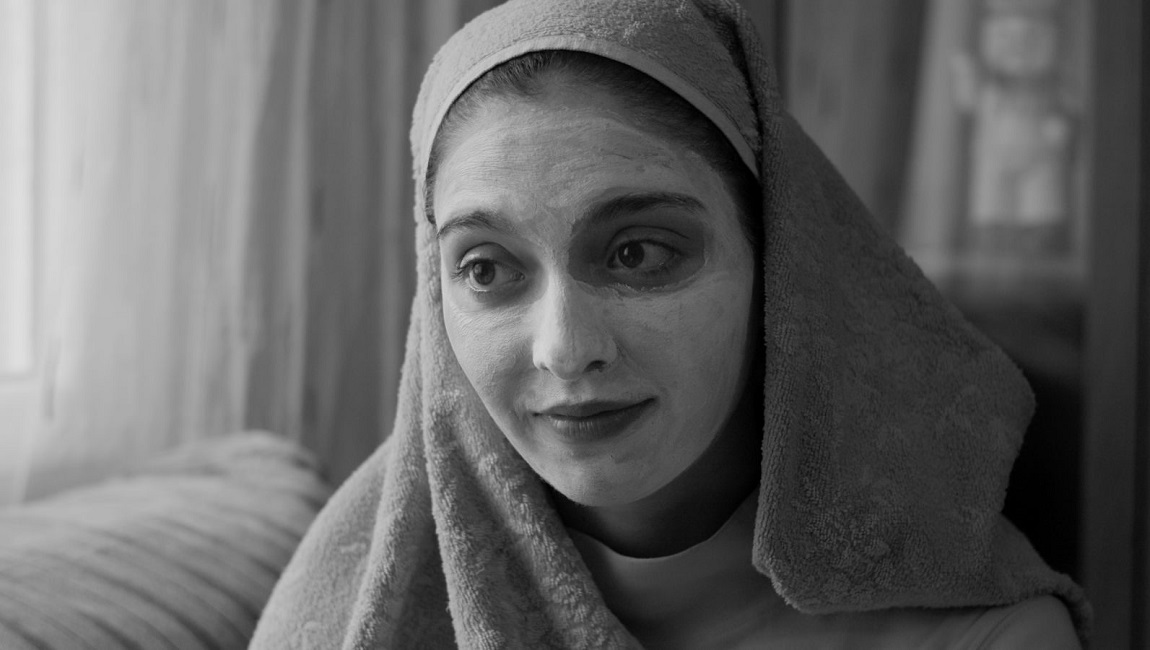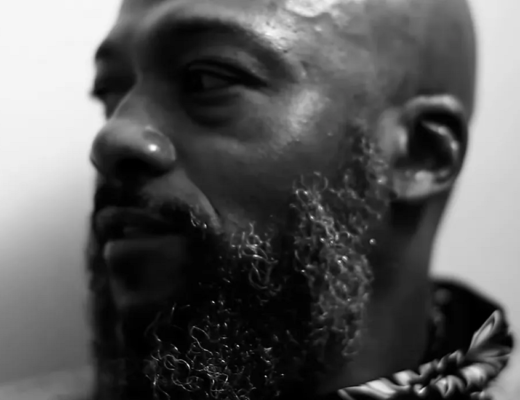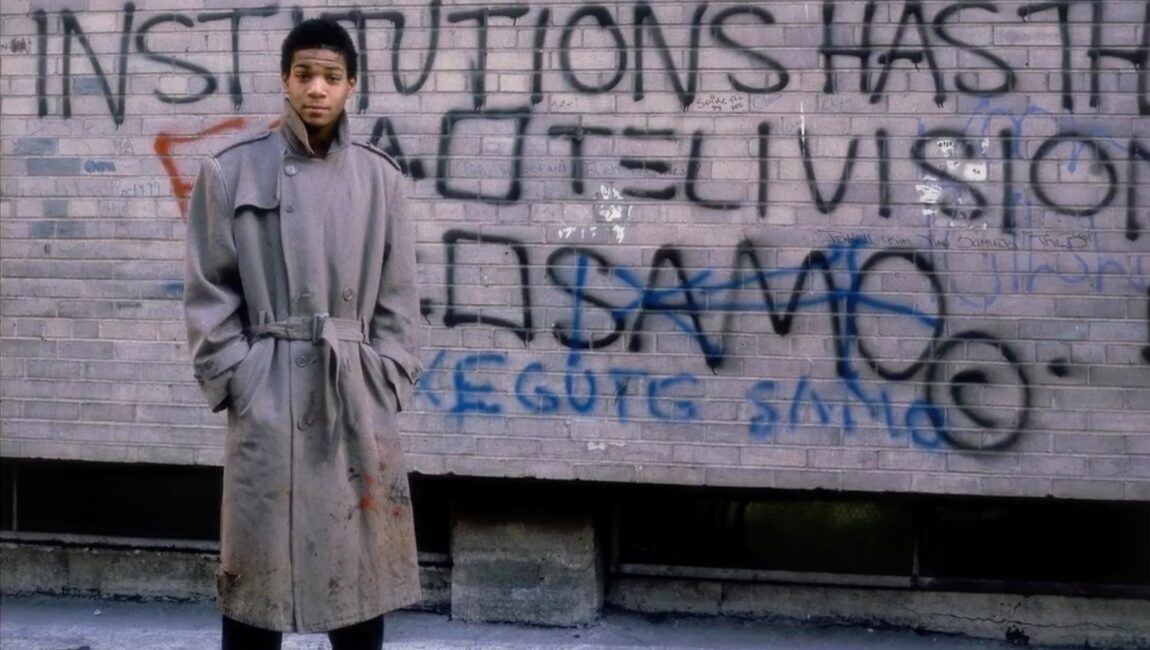El Planeta
This year, New Directors/New Films opens with Amalia Ulman’s debut feature film El Planeta, a cool choice for MoMA and Film at Lincoln Center, two institutions that generally shy away from any youth-facing programming. Granted, ND/NF tends to be a more hospitable space for hipper, zeitgeisty curation than the festivals and series otherwise presented by these venues, but there’s still often a broadness to the selection committee’s interpretation of “new” that doesn’t consistently account for contemporary cultural resonance (alas, it wasn’t so long ago that Patti Cake$ was the fest’s opening night selection). And so it’s encouraging to see ND/NF position Ulman, an artist whose work is very much in conversation with the current cultural moment, at the front of their festival; a confident statement regarding cinema’s immediate future from both artist and curator.
Meanwhile, for Ulman, this New York City premiere of El Planeta announces her as a legitimized filmmaking voice, though she’s been a working conceptual artist for around a decade now. Many of her projects have involved cinematic performance and narrative, as filtered and refracted through mediums like social media — her most famous piece, “Excellences and Perfections,” was staged over various Instagram accounts — and PowerPoint. If anything, El Planeta represents a shift into more conventional storytelling for Ulman, a slight pivot that feels rather effortless and undaunted by the old structures and parameters of feature filmmaking.
Shot in digital black and white using a relatively tiny 4k camera, and using gauche iMovie-esque transition animations, El Planeta presents as a sort of meandering, lo-fi, post-mumblecore comedy, though its script and cinematography are much more motivated than those descriptors suggest. Ulman casts herself in the lead role alongside her actual mother, Ale Ulman, and sets the film in Gijón, Spain where she grew up, implicitly blurring the lines between performer and character while never explicitly addressing this meta angle in the film proper. El Planeta’s mother/daughter duo are a pair of aloof scammers, formerly quite wealthy, but thrust into destitution in the wake of Spain’s recent economic recession and the passing of the family patriarch. Seemingly unable to imagine a life without designer clothing and beautiful restaurant foods (or perhaps, more accurately, ushered along by unquestioned inertia), mother and daughter resort to petty theft and dumb grifts in order to maintain their image, all while eviction looms in the background.
As codependent figures symbolic of declining empire and hollow bourgeoise performance, El Planeta’s protagonists will inevitably draw comparisons to those of the Maysles Brothers’ Grey Gardens — Ale Ulman’s performance as delusional matriarch has definite Big Edie vibes — but this film’s characters (by nature of it being scripted by its star) are far more dynamic, Amalia Ulman’s Leonor afforded narrative tangents that humanize and complicate: an awkward attempt to break into sex work with a terse, half-interested prospective client (a surprising Nacho Vigalondo cameo, free of vanity), a meet-cute with the store clerk she and her mother shoplift from that turns into an extended date, and then… something else entirely. These plots give us more of Leonor beyond what can be easily satirized, and bring the world that El Planeta depicts better into focus. It’s a world where narcissism is an expected baseline personality trait, where everyone is running a scam and living in a constant state of reaction. This is, of course, the world we live in, and the world we glimpse in Grey Gardens, and Instagram, and so on. But El Planeta makes these connections without flaunting them, translating the universality of these unfortunate tendencies of the human ego into smart, accessible comedy. Ulman’s debut feature might not be completely uncharted territory for the multi-disciplinary artist, but in this medium, she has found exciting new means of expression.
Writer: M.G. Mailloux
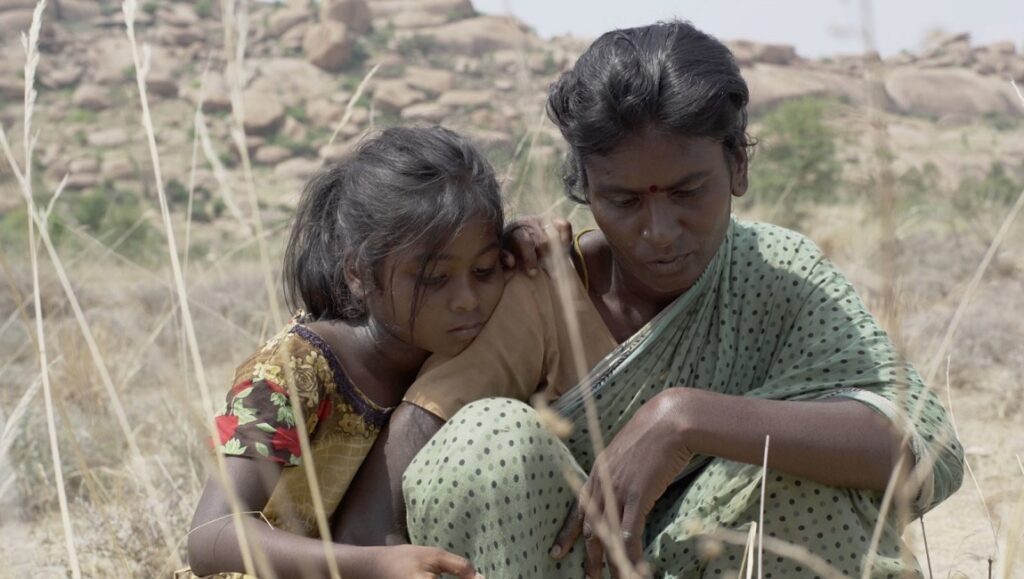
Credit: Vinothraj PS
Pebbles
From its opening moments, which show a bird flying to and from a perilously perched nest, Vinothraj P.S.’s debut feature Pebbles tensely balances between serenity and aggression. The winner of the Tiger Award at this year’s Rotterdam Film Festival, it is a deliberately spare affair, running just 76 minutes — including a full ten minutes of credits — and set amid the barren, remote villages in the Indian state of Tamil Nadu. It finds its narrative engine in Ganapathy (Karuththadaiyaan), a vulgar, alcoholic father who barges into his son Velu’s (Chellapandi) school, demands to know whether he loves him or his mother more, and all but drags him along to deliver an ultimatum regarding his marriage.
From this setup, Vinothraj crafts a mesmerizing, fragmented series of voyages, which moves from bus rides and contentious conversations with various figures to extended shots of father and son walking through the savanna in the hot summer. Moving rapidly between inexorable handheld tracking shots and wide master shots from a variety of angles (including a few drone shots that bring out the cracked textures of the landscapes), the broad formal outlines are certainly patterned to some degree on slow cinema directors.
However, there is an aggression and unpredictability to the style that cast such comparisons in a different light, and which make Pebbles a continually engaging work. Chief among these is the narrative structure, which, while adhering to the general arc previously described, always seeks to complicate the father-and-son dynamic by introducing and briefly following various characters, even before Ganapathy and Velu come across them in their voyage. The zenith of this careful choreography of characters comes during a ten-minute long take, which follows Velu as he walks through his mother’s village to deliver his father’s message, switching primary camera subject amongst various other family and village members before his father starts a brawl with his brother-in-law, finally ending back outside of the village once more.
And of course, given his centrality in the narrative, Karuththadaiyaan more than fulfills his role as the anchor of Pebbles’ visual progression, moving forward with a confident, cocksure swagger that constantly thrusts his right shoulder back and forth. Vinothraj’s direction responds in kind, often utilizing slow-motion, unexpected camera moves — including a revolving tracking shot as Velu is beaten that catches far more of the ground than of the “action” — and even oddly restive interludes to jumpstart the viewer’s attention. Through it all, especially with a curious yet fitting ending, Pebbles remains a slippery but never punishing work, always enlivening its hypnotic depiction of travel and motion with unexpected, welcome elements.
Writer: Ryan Swen
Azor
Andreas Fontana’s Azor is a fascinatingly oblique quasi-thriller, carefully organizing a deceptively placid narrative around two distinct structuring absences. It’s 1980, and a Swiss private banker named Yvan De Wiel (Fabrizio Rongione) has arrived in Argentina with his wife, Ines (Stephanie Cléau). Yvan is meeting with nervous clients and trying desperately to retain their business after the disappearance of one of his partners, Rene Keys, who had been living in the country and is now suddenly nowhere to be found.
Yvan and Ines’ various summits with wealthy businessmen, politicians, lawyers, and old-money patriarchs constitute the bulk of the film’s narrative, with each encounter also gradually unveiling conflicting portraits of the absent Keys (who’s never seen in the film after a brief, pre-credits appearance, where he has no dialogue and appears to be laughing at something off-screen). Yvan insists that Keys is back home in Switzerland, although he can’t seem to get a hold of him, while various clients either extol Keys’ outgoing personality and keen mind or quietly suggest that he “went too far.” As such, each encounter takes on a kind of clandestine undercurrent — everyone speaks in a clipped shorthand, using banking terms and slang while bouncing back and forth between French, English, and Spanish. The world of international finance mirrors the tangled web of interpersonal relationships among the monied upper class. No one trusts anyone, and it’s impossible to know who is telling the truth. Coupled with a droning, synth-heavy score, which resembles Howard Shore’s early work with David Cronenberg, these gatherings have the inflection of a John le Carre espionage tale; everyone is constantly waiting for the other shoe to drop. While the specter of Keys hangs over the proceedings, vague, portentous warnings about the state of the country occasionally come into focus. It’s a clever gambit, with Fontana using Keys as a kind of misdirect, while the real danger slowly creeps in around the margins.
While never stated outright (even the year 1980 is only established late in the film, when Yvan consults a calendar), Azor clearly takes place during Argentina’s “Dirty War” period, which found the country under the rule of a military junta that maintained control by brutally suppressing dissent. The omnipresent threat of execution or being disappeared hangs over each of Yvan’s interactions, as he finds himself falling unwittingly deeper into the inner world of this dangerous ruling class. Rongione and Cléau are both very good in difficult roles, slightly adjusting and reconfiguring their personalities with each new client, the better to ingratiate themselves to these societal elites. Rongione in particular does a lot of acting with just a look, the occasional subtle hint of a smile or down-turned frown sometimes the only indication of his masked musings. Using mostly simple, static setups, with clean, precise compositions, Fontana clearly delineates how the banality of financial maneuvering can paper over where that money was acquired from, and how that simple evasion can lead ordinary people into extraordinary positions of moral failure. Eventually, the audience is able to suss out what has likely happened to Keys, but he continues to function as both an aspirational figure and cautionary tale to Yvan, a phantom presence hanging over everything. After losing an important client, Yvan finds himself suddenly amenable to taking on the one client that even Keys seems to have balked at. And so the film ends with Yvan traversing a river in the dead of night, in a clear Hearts of Darkness allusion, and finds at the end not Kurtz but a Faustian bargain with a paramilitary death squad. Yvan leaves with a wealthy new client, but loses his soul in the process, his now unambiguous smile a horrific window into an empty shell of a man. Call it the bureaucracy of evil.
Writer: Daniel Gorman

Credit: MLine Distribution
Short Vacation
What does the end of the world look like to a group of middle school girls? In Kwon Min-pyo and Seo Han-sol’s debut film, Short Vacation, four friends embark on a meandering mission to find out, spurred by an enigmatic prompt from their photography club teacher and armed with disposable cameras. Up until then, they’ve languished through their last few days of the semester, where they’re admonished to “have a fun and meaningful summer.” Seemingly at random, they decide to take Seoul Subway Line 1 to its last stop and discover what lies at the edge of the map. They don’t seem interested in the assignment’s apocalyptic overtones; instead, their destination is purely literal: they’re seeking the end of the railroad tracks. For this group of lifelong city dwellers, the end of the world is where mass transit terminates and the countryside begins.
Middle school can be a brutally awkward time, full of raging hormones and confusing emotions. For Koreans, it’s also a time of heightened academic pressure that poses a major shift from elementary school. The majority of middle schoolers attend private “cram schools” in addition to regular school, and the importance of academic achievement is almost all-encompassing. This pressure is depicted throughout Short Vacation; the girls offhandedly one-up each other about their grades and abilities, and the few adults in the film contribute to this environment of protracted educational anxiety. In this context, the film’s title isn’t just referring to a literal vacation — the girls’ impromptu day trip — but to a brief respite from the sort of pressures that will only mount as they get older, culminating in a notorious fever-pitch of competition around college-entrance exams.
In a broader sense, this jaunt is also a break from the inexorable responsibilities of their imminent adulthood. As the day wears on, the girls find themselves lost and far from home, their phone batteries dead and not a soul in sight to give them a lift. They seek shelter from the pouring rain in an empty village hall and decide to spend the night, whiling away the hours confiding in each other. They seem to recognize that this is a special, maybe even pivotal moment, and perhaps this understanding encourages their vulnerability. They share memories of their parents and grandparents, revealing things they wish they hadn’t said and actions they wish they’d taken, pondering how their lives could have been different and delighting in moments of unexpected connection. Kwon and Seo unsparingly capture the fragility and tenderness of these conversations, the unspoken emotional tug behind this yearning for friendship. Interspersed throughout the film are the girls’ analog snapshots, hovering like portals before disappearing again. “The world is big,” they reassure each other, untethered from the umbilical cord that leads them home for the first time, and making their way just fine.
Writer: Selina Lee
Friends and Strangers
Friends and Strangers, the feature-length debut from writer-director-editor James Vaughan, opens with shots of drawings and paintings depicting the colonization of Australia, all connected by the brutality of their imagery. We are then immediately thrust into present-day Sydney, static shots of the city highlighting the concrete-and-steel skyscrapers that loom large over our protagonists, Alice (Emma Diaz) and Ray (Fergus Wilson). Ray comments on the literal trash that subsumes the lower echelons of the city, the camera lovingly revealing the debris and rubbish that clogs the ravines beneath. This is then contrasted by Alice and Ray’s decision to head into the wilderness for a weekend hiking expedition, with the vast beaches and breathtaking landscapes spotlighting the land’s natural beauty. Yet one begins to wonder: what does any of this have to do with the tentative and ultimately fractured relationship that develops between these two former friends over the course of the next two days? The film then abruptly cuts to several months later, where Ray and a friend head over to a client’s place to receive details on an upcoming wedding videography gig. The infinitely wealthy gentleman shows off his lavish home, which is adorned with pieces of art highlighting the Queen mum and the notorious Kelly gang, while the house is made of completely hollow walls. The owner grills Fergus on the ultimate direction of his life and career, and poses each question in a way that obfuscates more than clarifies, to the point that the entire interaction seems like a Lynchian fever dream.
A title card at film’s end highlights that the film was “Shot on the lands of the Eora and Ngunnawal Peoples.” Friends and Strangers is the work of a filmmaker who clearly has a lot on his mind in regards to the troubled history of his homeland, its current state, and the people who make up its population. The problem is that Vaughan’s ambitions never coalesce into a greater whole. The first half is especially peculiar: so much is made of the potential relationship between Alice and Ray, yet nothing ever comes of it, and Alice goes AWOL for most of the film’s remainder. As the title makes clear, this is very much a film of the connections and relationships that bind us, sometimes in ways we barely even realize, similar to how we are all bound to our country’s own history, the effects of our ancestors’ actions rippling through time. This may also be a nod to the current generation’s seeming solipsism, their interest lying only in their own petty problems and relationships, highlighted by Alice and Ray’s interactions with middle-aged men where the only goal seems to humor their recollections of “the good old days.” Yet everything ironically feels disconnected, with random shots of state-sanctioned statues and sculptures highlighting the land’s colonization filling in the gaps, a visual metaphor as sledgehammer.
Friends and Strangers would be easier to write off as the half-baked ramblings of an overzealous intellectual, though, if it wasn’t for Vaughan’s complete command of craft. On a purely technical level, this is an incredibly well-made feature, its carefully composed static shots highlighting both the beauty of the land and the rot that lies just below eye level; there is a vibrancy and richness to the imagery that is truly exquisite. Vaughan’s inventiveness is especially on display as Ray makes his way to the home of his wealthy client. A musical score filled exclusively with the haunting echoes of violin and cello fills the soundtrack, the work of an obnoxious neighbor proudly displaying the limitless features of his expansive home sound system. Indeed, the sum of the sound design here is stunning, as the score mixes with the nonsensical ramblings of the owner and centers viewers in the mindset of the increasingly intoxicated Ray, creating a sense of droll dread that would feel at home in the works of Yorgos Lanthimos. Not a small compliment, to be sure, and Friends and Strangers certainly makes one anxious to see what Vaughan will tackle next; ideally, an effort in which his ambitious ideas are more acutely realized.
Writer: Steven Warner
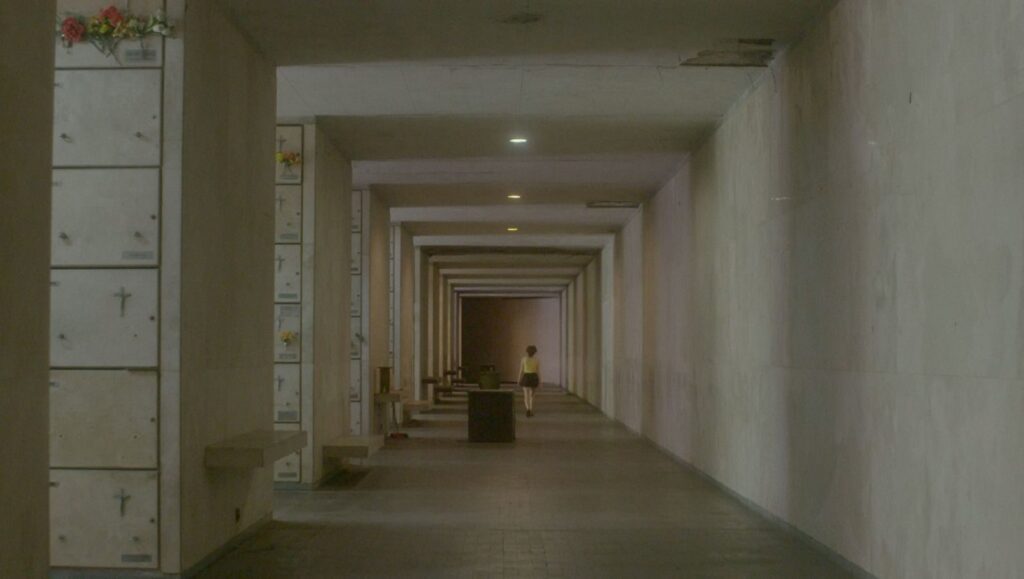
Credit: Iva Radivojević
Aleph
Iva Radivojević’s Aleph builds itself atop Jorge Luis Borges’ short story of the same name, rendering a small tale of infinity-seeking, a philosophical riff on the Whiteheadian theories that surround interconnectivity in what is commonly referred to as the “metaphysical realm.” The film follows 6 voices, each of different nationality. What emerges, once these disparate segments have coalesced, is a portrait of the space that exists in between one another, individual subjects acting as a vessel through which we can make tangible even the most surreal imagination of collectivity, of empathy. Its aim, it then seems, is the refutation of solipsism.
For viewers who don’t identify as spiritualists, the film’s cognitive mapping of the world-at-large might fail to provoke any earnest reaction, but where an interesting entry point to these notions can be found is in a Talmudic assessment. The Torah, as it is read today, begins not with Aleph (or Alef), but Bet, the second letter of the Hebrew alphabet. Rabbis of a bygone age made this decision to ensure that the beginning of our universe, in translation from an oral history to a written one, could not be concentrated to a single moment. Aleph, then, became an unknown, an everything — Bet starts history, Aleph is everything else. Certainly, this bit of rabbinic scholarship influences the fluidity on display in Aleph, an interest directed outward and between the self and others. Unfortunately, these larger-than-us concepts crystallize into a film with movements that ultimately fail to reconcile with the limitations of a mechanical apparatus. We see the universe through a washed-out lens, an S-log, barely color-corrected vision — a prosumer, digitized reality. The world is made homogenous in its re-presentation, and this homogeneity eventually swallows up curiosity, creating a landscape more in the vein of touristic postcards and less concerned with the impossibility at the crux of its ostensible interests. Characters become liminal imports of narrativity, culminating in a vague, all-too-organized orchestration of what is supposed to be amorphous. Aleph is a film that seeks to chisel a shape out of water, a respectable ambition, undoubtedly, but not one that can be contained here. In the end, it seems that Radivojević is seeking to give form to something that, in reality, can never have one.
Writer: Zachary Goldkind

